The communal kitchen is the beating heart of a houseshare. In the sitcom Friends, it’s where Monica gets a turkey stuck on her head; in New Girl, it’s where Nick repeatedly fixes the kitchen sink whenever he’s “going through stuff”. It’s the natural place for drunken deep and meaningful chats, first kisses and epic fallouts. It’s also where many people discover how truly disgusting having housemates can be. It can often feel like you’re taking your health into your own hands when you cook in a shared kitchen.
It’s something the rising number of seasoned house-sharers among us know too well. While the exact number of house-sharers in the UK is hard to quantify precisely, Spare Room report the number of people in the UK looking to rent via the flat-sharing platform has tripled between 2013 and 2023, and further reports indicate 11.5% of house sharers are over 40. It’s also something this year’s fresher students who are opting to live in university halls are about to find out.
“Shared living is a real melting pot of practices and habits and people exposing each other to risks in different ways – usually in a space with little ventilation,” says Dr David Megson, a reader in chemistry and environmental forensics at Manchester Metropolitan University.
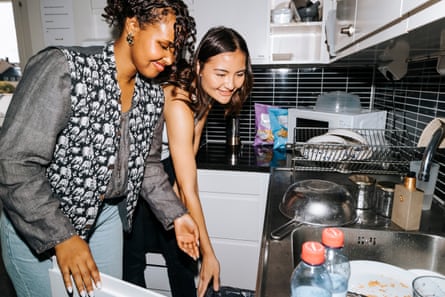
Dr Alison Cottell, a microbiologist lecturing at the University of Surrey, agrees that life in a shared kitchen is about weighing up the risks. “Bacteria are everywhere, and it’s normal to come into contact with them every day, but you want to avoid spreading anything high-risk.”
Having lived in four university house shares and eight professional house shares, I’ve seen a real spectrum of kitchen crimes committed. But how worried should you be about someone else’s disgusting habits? Are they simply annoying, or could they make you unwell? The chemist and the microbiologist give their verdicts.
Burning food on to the pan
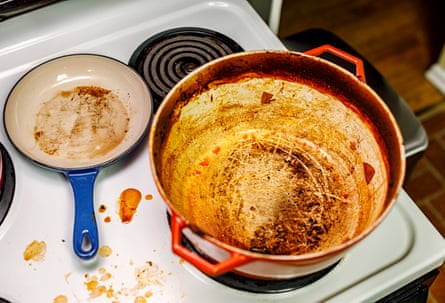
Yes, burning food creates acrylamide, although it is unlikely to cause cancer, as you would need to consume a large amount. “The black colour on burnt food isn’t the specific toxic substance,” says Megson, “but it is a location where toxic chemicals can be created during the burning process. So scraping the burnt bit in the bin and eating the unburnt bit is my advice.” He has a vivid memory of a housemate scraping a non-stick pan with a metal fork. “I found it painful even then and I didn’t know much about the world of forever chemicals.”
Using a metal utensil scrapes off the top layer of Pfas, the chemicals used to make the non-stick coating on a pan, he explains, meaning you end up eating them. Studies have linked these “forever chemicals”, which are almost impossible to break down, to infertility and cancer, as well as other diseases. “Using the pan at too high a temperature is also going to release some of those chemicals,” he says. While most non-stick pans come with a warning not to heat them above 250C or 300C, this is hard to monitor. “If something’s burnt to the bottom of the pan, don’t scrape it off with your fork. Let it soak it and wash it up gently,” is Megson’s advice.
You could try purchasing wooden utensils and advising your housemates to use the non-stick pan on the smaller ring on the hob – or, like Megson and I, you could get a pan of your own, take care of it, and keep it in your allotted cupboard.
Home-curing meat
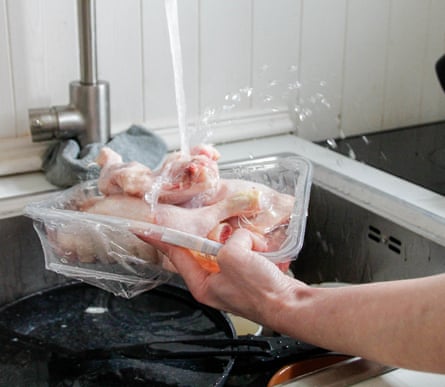
“There’s a whole pig on the kitchen table and chunks of it being cured on a rack in the fridge.” A text I’ll never forget and hopefully one I’ll never receive again. A housemate, getting experimental in the kitchen, was butchering a pig and massaging it with salt in order to dry cure it himself.
“You’re likely to end up with a really stinky kitchen,” says Cottell, who explains that, as well as the bacteria that will grow if it’s not properly cured (the salt is meant to dry the meat out, so bacteria can’t survive), there might be pathogens (disease-causing organisms) that multiply on raw meat and make you ill if you eat them. If you see flies around it, it’s a problem. They’ll carry these germs to other surfaces and foods.
If you have a housemate who’s into fermenting vegetables, it’s fungi you’ve got to watch out for, says Cottell. “When done correctly, fermenting creates an acidic environment in which many bacterial pathogens cannot grow. Fungi, however, can reproduce in acidic conditions. While they’re unlikely to infect a person when ingested, they may produce toxins that can cause illness if they’re consumed.”
Handling meat is one of Cottell’s main concerns in a shared kitchen setting. “The Food Standards Agency undertook a study on food-hygiene practices two years ago,” she says, “and found that twice the number of students were not adhering to health recommendations such as those around handling meats, compared with the rest of the population. Students were found to be more likely to engage in risky practices like washing raw chicken under the tap or not storing meat properly” – that is, on the bottom shelf of the fridge in an airtight container. Chicken can harbour campylobacter and salmonella, and washing it sprays bacteria over large areas.
The advice? Don’t rinse chicken under the tap. Cook meat thoroughly. Use different chopping boards for raw meat and ready-to-eat food. And, if you are going to attempt to cure meat, do your research, cover it properly and regularly wipe the surfaces.
Not doing the laundry
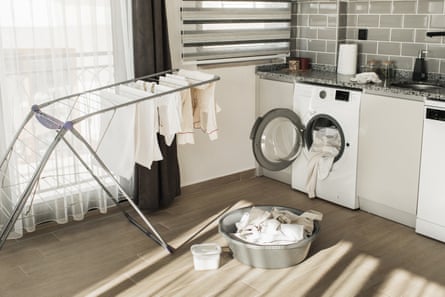
It smells distinctly musty, but is dirty laundry actually harmful? “Dirty clothes left for days in a laundry basket are unsavoury, but there aren’t many direct foodborne health risks here,” says Cottell. That’s the case even if the basket is in the kitchen.
What you can smell is bacteria trapped in the damp fibres. “Bacteria aren’t going to leap out on to your surfaces or into your food,” she reassures. “In the unlikely event that soiled clothing comes directly into contact with something you’re about to eat, that could cause contamination, which might cause a very short-lived sickness.” If someone musty-smelling is cooking for you, ask them to roll up their sleeves.
Leaving dirty dinner plates to soak … for a week
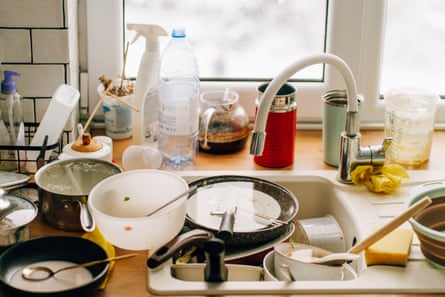
The plates might be growing mould, even attracting flies – and, when the washing up is finally tackled, it’s not always particularly thorough.
“Health risks associated with leaving unwashed crockery on worktops or to soak in the sink really depend on what the items have been used for. A plate on which raw meat has been defrosted and then left in a sink of warm dishwater poses a significantly higher risk than one that has been used for a piece of toast,” notes Cottell. That’s because of the bacteria on raw meat that cause illness.
And the plate with rotting food on the side? “The bacteria that cause food to rot create horrible smells and make the food unpalatable,” she says. “Such bacteria do not usually cause infections, but may produce waste products as they break down the food they are growing on. It’s these waste products that can cause someone to feel ill if they eat them.” So don’t be tempted to finish off your housemate’s mouldy pizza.
Keep an eye on how well dishcloths are being rinsed, too. “They are renowned for harbouring large numbers of bacteria,” says Cottell. “If you have wiped an area where you’ve prepared raw meat and then another area that you’re going to eat from, or prepare ready-to-eat food on, you’re contaminating it with potentially harmful bacteria.”
Drying your dishcloths and teatowels well is key, she adds. “These bacteria can live in damp conditions for a couple of days, but they won’t survive on a dry surface for long. Boil the cloths to kill off pathogens and use soap. Soap is crucial because it breaks down the fats and membranes in viruses and bacteria, which ensure they don’t survive.”
Vaping indoors

It’s quite common now to sit opposite a housemate and watch them alternate between tokes on their blue-raspberry vape and forkfuls of their meal. It’s a wild ride for their tastebuds – but does it also pose health risks for you?
“When it comes to vapes, it’s a complete lottery,” says Megson. One study looked at 50 different vape brands and found 113 different chemicals across them. “It’s a complete spectrum of the unknown. They’re chemically complex mixtures and, when heated, there are going to be some potentially nasty compounds. Having it in that enclosed environment is far from ideal. If there was anyone vaping in my house, I’d ask them to go ask outside in the same way I would if they were smoking a cigarette.”
Even if your housemate vapes in their own room, it’s not good for your health, as it contributes to air pollution in the house. Studies link second-hand vape exposure to shortness of breath and there are risks associated with third-hand vape exposure, too – when toxic chemicals from the vape accumulate on surfaces – because you might accidentally ingest them.
Forgetting to wipe countertops
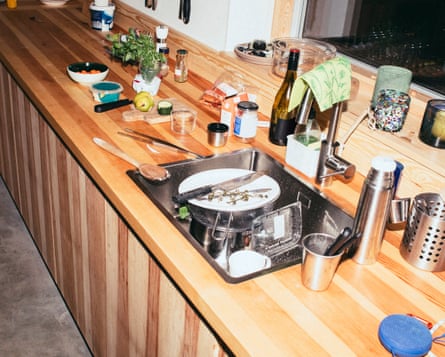
Toast crumbs, blobs of baked-bean juice and a few stray peas are all common detritus on the surface of a shared kitchen. Aside from the fact you’re putting on a dinner party for mice, moisture from things like bean juice allow harmful bacteria to live longer. And, as the food rots, it will create toxins that, if ingested, might cause illness. But, from a microbiologist’s perspective, the main risk is contamination.
Cottell says: “Pathogens like norovirus and staphylococci can spread via food if people haven’t washed their hands properly [when preparing it]. If you’re not wiping the sides often and you’re living with people who have poor hand hygiene, who don’t wash them after going to the loo or blowing their nose, you’re risking pathogens from the surface they touch contaminating food.”
Keep the surfaces clean by wiping them with warm, soapy water before preparing your own meals. “When you get bacteria like salmonella on a surface that’s clean, it quickly dries out and won’t usually be able to cause disease for long,” says Cottell. “But drop it on a kitchen surface (microwave, fridge, oven or table) where there’s lots of dirt, fat and oil residues, and pathogens survive much longer.”
Relying on air fresheners
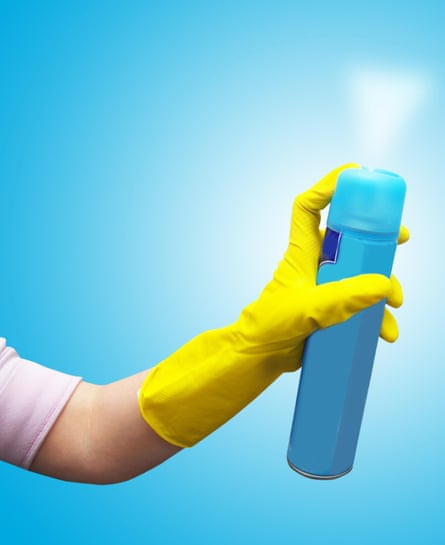
A valiant attempt at domesticity that doesn’t require doing any actual washing? There’s always one housemate who burns incense 24/7, or insists on a plug-in air freshener. “If I ever go to a hotel, the first thing I do is take the scented plug out,” says Megson. “Because it’s a chemical cocktail.”
Ingredients in air fresheners don’t have to be listed and many of them contain potentially harmful compounds, with some studies indicating that regular use can even affect heart health over time. “It might be nice to cover the unpleasant smells in a shared home, but it can really irritate people’s respiratory and sensory systems. Candles incense, oud are the same. Anything you’re lighting could contain and create some nasty chemicals,” says Megson.
It won’t smell as exotic as sandalwood and jasmine, but opening windows and staying on top of the cleaning is the best advice.
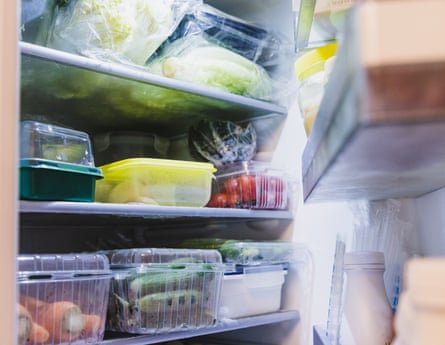
After moving into a house share, you’ll usually be allotted a kitchen cupboard and shelf in the fridge all to yourself. Keep yours as clean as you like, but you can’t escape the wrinkly peppers and furry yoghurts that lurk elsewhere in shared fridges.
Cottell admits the smell of rotting food is nauseating, but she’s less concerned about the “food-spoiling bacteria” that are creating these sulphurous odours because it means we’re aware food has gone off and are therefore less inclined to eat it. “I’m more worried about the hidden bacteria that you can’t taste or smell,” she says.
Leftover rice and pasta in the fridge is safe as long as it’s eaten cold, but red flags arise if it’s reheated, because of bacillus cereus. “It’s a soil-borne microbe which is common in rice and, when reheated, can lead to a short but intense sickness bug.”
But raw meat in the fridge is the biggest red flag of all. “Campylobacter and salmonella are spread predominantly through poultry and cause nasty diarrhoeal diseases. Then there are many different strains of enteropathogenic E coli too, generally spread through meat that’s not cooked properly.”
It’s a problem in fridges if meat juice drips down on to ready-to-eat food. Ideally, you would store raw meat at the bottom of the fridge, but if you’re allotted the middle shelf, that’s tricky.
The solution? Keep your meat in a sealed container and ask your housemates to do the same. If they’re not playing ball, fight your way to the top shelf.

 3 months ago
106
3 months ago
106

















































